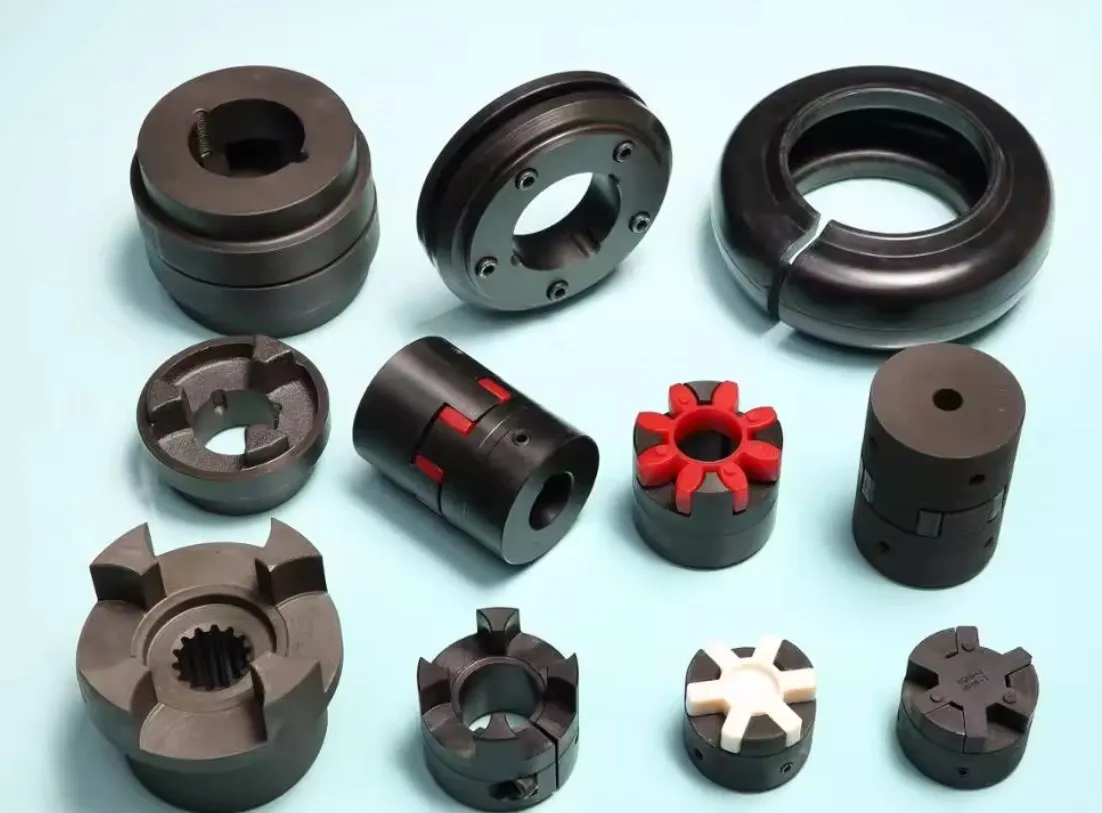Elastic Coupling for Renewable Energy Storage Systems
Introduction to Elastic Coupling
Elastic couplings are increasingly becoming a pivotal component in renewable energy storage systems. These couplings provide the necessary flexibility and resilience to accommodate misalignments and absorb shocks, thereby protecting the mechanical components of the storage systems.
Benefits of Elastic Coupling in Renewable Energy Systems
Elastic couplings enhance the longevity and efficiency of renewable energy systems. By mitigating the impact of mechanical vibrations, they ensure smoother operation and reduce maintenance costs.
Types of Elastic Couplings
Elastic couplings come in various forms, including elastomeric couplings, jaw couplings, and tire couplings. Each type has unique properties suited for different applications within renewable energy storage systems.
Applications in Wind Energy
In wind energy systems, elastic couplings are used to connect the gearbox to the generator. This connection ensures that misalignments and mechanical stresses are absorbed, preventing damage and enhancing system reliability.
Applications in Solar Power Systems
Solar power systems utilize elastic couplings to link tracking systems with motors. This integration allows for precise movement and alignment, improving the efficiency of solar panels.
Innovations in Elastic Coupling Design
Recent advancements in materials science have led to the development of high-strength elastomers and composites. These innovations have significantly improved the performance and durability of elastic couplings in renewable energy applications.
High Elastic Rubber Coupling

High elastic rubber couplings are renowned for their exceptional flexibility and damping capabilities. They are designed to accommodate high levels of torsional vibration, making them ideal for variable load applications.
Superior Damping Characteristics
High elastic rubber couplings can absorb and dissipate substantial amounts of energy, reducing the stress on connected components.
Enhanced Misalignment Tolerance
These couplings are capable of handling significant angular, radial, and axial misalignments, ensuring continuous operation even under challenging conditions.
Reduced Maintenance Requirements
Due to their robust design and high-quality materials, high elastic rubber couplings require minimal maintenance, thus lowering operational costs.
Noise and Vibration Reduction
The inherent damping properties of rubber help in minimizing noise and vibrations, leading to quieter and smoother machinery operation.
Versatility in Applications
High elastic rubber couplings are versatile and can be used in a wide range of industrial applications, including renewable energy systems.
What are Flexible Couplings Used For?
Flexible couplings serve a myriad of purposes in various industrial applications. They are essential for ensuring the longevity and efficiency of machinery by mitigating the effects of misalignment and mechanical stresses.

Connecting Misaligned Shafts
Flexible couplings are crucial for connecting shafts that are not perfectly aligned. They absorb the misalignment and prevent undue stress on the connected components.
Absorbing Shock Loads
These couplings act as buffers, absorbing shock loads and protecting machinery from sudden impact forces that could lead to damage or failure.
Compensating for Thermal Expansion
In systems where thermal expansion can cause misalignment, flexible couplings compensate for these changes, maintaining the integrity of the connection.
Reducing Vibration Transmission
Flexible couplings help in isolating vibration between connected components, leading to smoother operation and reduced wear and tear.
Facilitating Easy Installation and Maintenance
Their design allows for easy disassembly and reassembly, making installation and maintenance more straightforward and less time-consuming.
What are the Three Types of Coupling?
Couplings can be broadly categorized into three types based on their function and design: rigid couplings, flexible couplings, and fluid couplings.
Rigid Couplings
Rigid couplings do not compensate for misalignment between connected shafts. They are typically used in applications where precise shaft alignment is maintained, such as in high-precision machinery.
Flexible Couplings
Flexible couplings are designed to accommodate misalignment and absorb shock loads. They are widely used in applications where some degree of flexibility is required to protect connected components.
Fluid Couplings
Fluid couplings use a fluid medium to transmit torque between shafts. They are commonly used in automotive and industrial applications where smooth and controlled acceleration is necessary.
Choosing the Right Elastic Coupling
Selecting or customizing the appropriate elastic coupling involves considering various parameters and actual conditions.

Load Requirements
Understanding the load requirements, including torque and speed, is essential in choosing a coupling that can handle the operational demands.
Misalignment Tolerance
The degree of permissible misalignment, whether axial, radial, or angular, must be assessed to ensure the coupling will function effectively under the expected conditions.
Environmental Conditions
Factors such as temperature, humidity, and exposure to chemicals should be considered, as they can affect the material properties and performance of the coupling.
Vibration and Shock Absorption
The coupling’s ability to absorb and dissipate vibration and shock loads is crucial for maintaining the integrity and longevity of the connected machinery.
Maintenance and Durability
Selecting a coupling that offers ease of maintenance and high durability will reduce downtime and operational costs over the lifespan of the equipment.
HZPT: Your Trusted Partner for Elastic Couplings
HZPT, established in 2006, is a professional manufacturer specializing in the development and production of high-precision couplings, ball screw support units, motor brackets, and motion modules. Our product line includes servo motor couplings, stepper motor couplings, miniature motor couplings, and encoder couplings.
Our Advantages:
Advanced Technology
We leverage cutting-edge technology in our production processes to ensure the highest quality and performance of our couplings.
In-house R&D Center
Our dedicated research and development center allows us to continuously innovate and improve our products, meeting the evolving needs of our customers.
Independent Processing and Testing Systems
We maintain our own processing and testing facilities, ensuring stringent quality control and rapid response to customer requirements.
ISO 9001:2015 Certification
Our commitment to quality is evidenced by our ISO 9001:2015 certification, guaranteeing that our products meet international standards.
Global Recognition
Our products are widely used and recognized by top-tier customers in Japan, the United States, Germany, Israel, Malaysia, Singapore, Taiwan, and other regions, attesting to our reliability and excellence.
For those seeking high-quality elastic couplings, HZPT provides superior products that enhance efficiency and reliability in various industries, including electronics, solar energy, photovoltaic industry, machine tools, packaging, molds, medical equipment, and printing. Partner with us to benefit from our technological prowess and exceptional customer service.